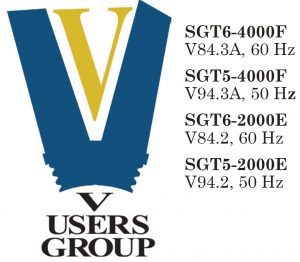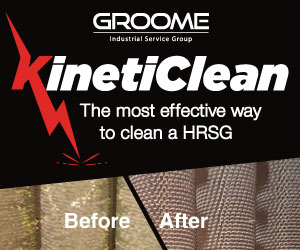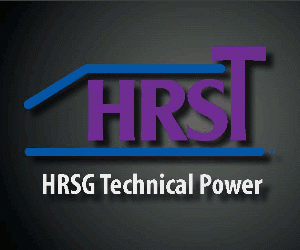 The fleet update at the front end of the SGT6-2000E breakout sessions reported the following facts:
The fleet update at the front end of the SGT6-2000E breakout sessions reported the following facts:
- The 50-Hz units in the 2000E family outnumbered the 60-Hz units 223-105 based on end of 2021 data.
- The 12-month rolling average availability for the 60-Hz fleet was 96.4% based on July 2021 data. Reliability was 98.8% at that time, starting reliability 98.7%.
- The combined fleet (50 plus 60 Hz) had recorded nearly 36 million EOH and nearly 500,000 starts by midyear 2021.
A summary slide on inner-casing lifecycle improvements pointed to the value of field feedback data in helping to maximize maintenance intervals. Nearly a dozen and a half SGTx-2000E turbines were said to have been allowed to extend maintenance intervals because of this effort.
Turbine-blading update showed 180 units worldwide operating with Si3D™ blading. Experience of 50-Hz units with first- and second-stage airfoil improvements extended to nearly 4 million EOH and 50,000 starts. For 60-Hz machines, the numbers were 1.9 million EOH and nearly 14,000 starts.
Dual-fuel conversion was an M&U topic as it was in the 4000F session, with the same basic considerations applying to both frames. Additionally in this session, users with systems that have been inactive or not used for a long period of time were advised to review their liquid-fuel infrastructure to be sure it is operational and available if needed.
Secondary fuels reviewed included fuel oil, naphtha, condensates, kerosene/Jet A, biodiesel, and methanol. The requirements for any one may be slightly different than for the others so this should be taken into consideration during your asset evaluation.
Hydrogen was part of the alternative-fuels discussion for H2 concentrations in natural gas up to 30%. The speaker said a test site for a fuel mix of up to 15% H2 is in development. Hydrogen would be stored separately onsite and injected via a mixing skid upstream of the GT control valves. These are just first steps for Siemens Energy, which has committed to 100% hydrogen capability for its GT fleet.
Ultra-fast-start modules were the next topic with the goal a 5-min interval from turning gear to base load for a reserve GT in Europe. If integrated into a combined cycle, a bypass stack is necessary. Another case study looked at halving that interval to 2.5 minutes.
Final topic on the M&U program was a design review of Siemens Energy’s cooling-air reduced (CAR) combustion chamber, nine sets of which are in operation now, with 12 expected by year-end. CAR’s many features—including optimized flame-tube bottom design, optimized tile holder, enlarged ceramic heat shield, and optimized mixing casing—contribute to a 20% reduction in NOx emissions (8 ppm today). Early inspection feedback is excellent.
Engineering. First subject on the 2000E engineering agenda was on the OEM’s improvement to the fourth-stage divided seal ring, available for all engine configurations: 50 and 60 Hz standard and Si3D. The purpose: Reduce wear between the vanes and seal ring.
The upgrade had been implemented on 113 units (37 60 Hz) by the time of the meeting. Proper installation was stressed to prevent recurrence of wear. Positive result: No increased wear or forced outages attributed to seal-ring wear had been reported by owner/operators with the latest design.
RCIE was the next topic and some of the same material covered in the 4000F session above was repeated here. Specific recommendations for this frame are the following:
- Field experience generally has presented no significant findings for most rotor and casing components between 100k and 150k EOH. Drivers for destacking include inner-casing maintenance, and replacement of the center hollow shaft.
- Recommendation for NDE at 3000 starts remains for rotor components. Service time has been extended for some machines following detailed unit analysis. Guidance on when to replace specific components on peaking engines is provided in the presentation.
A few thoughts came next on improvements to the turbine exhaust liner and diffuser to mitigate the maintenance impacts of findings reported by the user community on some units. A sketch included in the presentation identified as areas of possible concern: cracks at the circumferential weld at the engine exit, wear at the casing liner cover, cracks in the two- and four-wave compensators.
BEX and other repeats from the 4000F program. As hinted earlier, Siemens Energy rarely misses an opportunity to talk about the advantages of its Brownfield Engine Exchange offers some owner/operators. So that topic was on the 2000E program as well. Same for the compressor repair paint, wet compression, and sliding fuel-gas pressure operation presentations.
Repairs for restoring GT, ST, and generator bearings of spherical saddle design was an important presentation for anyone so challenged. Repair techniques—including metal-spray and arc-spray restoration—are covered. Techniques for the rework of axial-thrust load surfaces are included. Meaningful illustrations are included.
Mixing casing. Repairs to correct contact and material loss at the interface between the mixing casing and lower flame tube were discussed next. Bear in mind that thinning of the mixing casing scallop may lead to liberation of thinned material. A trial fix using a repair coupon was reported on. Next steps include improving coupon geometry, development of a double-scallop coupon, and application of hard-facing.
CVC3. Some mature SGT6-2000E engines have Compressor Vane Carrier 3 configurations which include cover plates and anti-rotation pins. The latest word for units with cover plates: Forget the anti-rotation pins. This should facilitate maintenance and reduce outage duration. Instructions are available on how to plug the holes.
Lift-oil hose. Last on the agenda was a look at an improved lift-oil hose that uses industry standard hardware—complete with drawings. The potential benefit of this upgrade, applicable to all existing units and standard on new, includes longer hose life (10 years).
V Users Group 2022
2. OEM and users discuss product lines, common issues
3. SGT6-4000F Fleet Engineering Update




